Proud to be:

Followers
See Also
About Me

- Reginaldo Gurgel
- Reginaldo Gurgel F. de Almeida. Born in Fortaleza, Brazil, he earned his black belt in Brazilian Jiu-Jitsu under Master Sazinho, and has studied with 3rd Degree Black Belt Professor Ademir Oliveria for eight years. He is currently the head Brazilian Jiu JItsu instructor of Team O2 located in Macungie, PA and the American Mixed Martial Arts Dojo in Quakertown, PA. Professor’s other achievements include: * World Champion 2007- Senior (CBJJO); * Second Place Brazilian Championship 2008 Senior (CBJJ) * Third Place World Championship Masters and Seniors 2000 (CBJJ) * Pan American Champion 2008 (CBJJE) * Brazilian Champion 2007 (CBJJO) * Three Times Northeast Champion * International Referee
Twitter Updates
Tuesday, September 14, 2010
Long Island Results
Congratulations to All of us !! Shihan, Zach, Dan, Tito, Sal and Jon !!
Saturday, July 31, 2010
Long Island BJJ Tournament
Sunday, September 12, 2010 at York College
Remember no registration at the door ! Go and register online now ! If you have any question ask your instructor more informations.
Sunday, July 18, 2010
Graciemag #160

Face to Face
THE MONSTER UP AGAINST THE WALL
Eight of 2010’s world champions interview

Cover article
MR. WORLDS
Roger Gracie submits seven, becomes three-time absolute world champion, makes history and, to his opponents’ chagrin, guarantees he won’t be stopping any time soon
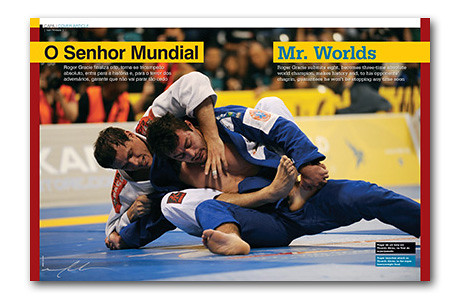
Special
HOMEWORK FOR TEACHERS
Stimulate unmotivated students, develop efficient methods for conveying knowledge, foster a desire to evolve in class. Coming up, everything you need to do to become a good instructor
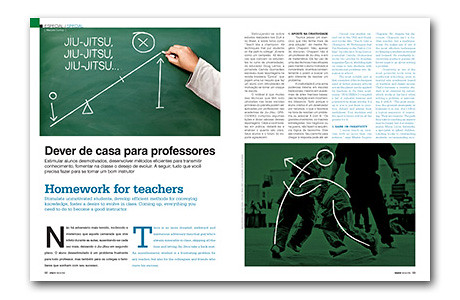
Training program
INVADING THE LAND OF GIANTS
Claudio Calasans, the winner of the World Pro Cup 2010 absolute division, teaches his preferred techniques for beating heftier adversaries
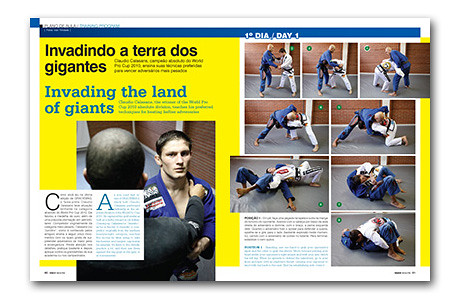
SECTIONS
Intro
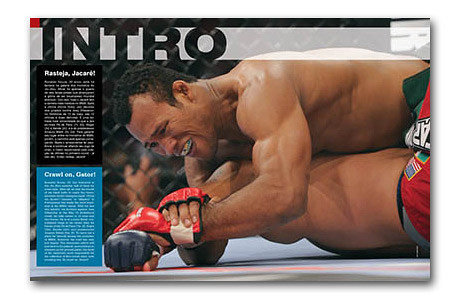
Ginástica Natural
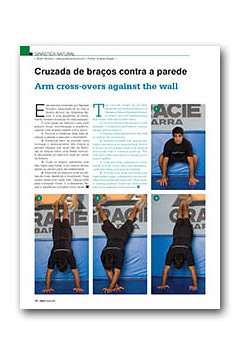
Training for Warriors
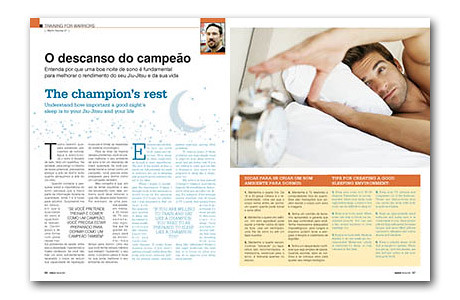
GMA
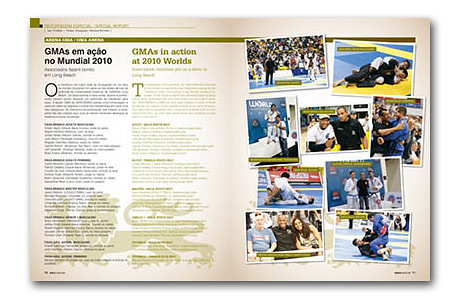
Anthology
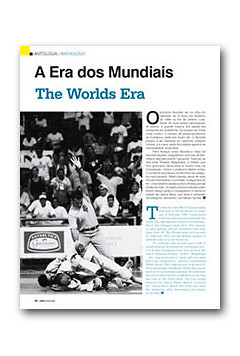
Saturday, July 10, 2010
The Good Fight Tournament
 Zak "Gi Joe" got third place at Cherry Hill Challenge: NJ after a 200 miles giving me a ride and with no rest the day before he did a great job representing Strategic Combat SAS Team family.
Zak "Gi Joe" got third place at Cherry Hill Challenge: NJ after a 200 miles giving me a ride and with no rest the day before he did a great job representing Strategic Combat SAS Team family.Congratulations for the well done job !! We take no prisioners !!
for more pictures click here.
Wednesday, June 23, 2010
Six Flags Tournament in NJ
Friday, June 4, 2010
Promoted Students
Patrick McDellry - Blue Belt 1st Stripe
Ed Estrada - Blue Belt
Dan Mehrkhar - Blue Belt
Theresa Cadden - Orange/ White
Cody - Yellow/ White
Saturday, May 8, 2010
NJSBJJF

First Place in New Jersey State Tournament !! I would llike to say thank you to Nelson, Jordan, Mike, Scott, GIJoe, Cesar and Tito for the Well Done Job !!
Friday, April 2, 2010
Master Sazinho Seminar
Master Francisco Carlos Pinto Sa "Sazinho" comes from Fortaleza, Brazil to teach at Macungie. Master Sazinho has more then 24 years as a Black Belt Master, having trained in Brazilian Jiu Jitsu for more then 35 years. He s the Master of Prof Reginaldo and his friends like Ademir Oliveira, Daniel Beleza, Daniel Tavares, Guybson Sa, Hermes Franca (Ex UFC) , Marcos "Maximus" Aulerio (Ex UFC) and Diego "Octopus" Saraiva (Ex UFC).
Date: May 5th - 2010 ( 6pm)
All Ages are welcome
Fee: $ 60
Certificates will be issued for pre-registered studentes.
Sunday, March 28, 2010
PABJJF Tournament Results
Sunday, March 7, 2010
PABJJF Tournament
We are going to figth at Scranton on March 28th, please register online http://www.pabjjf.com/ and lets be Team Champion this time !

Brackets will be made available on March 25th online. Weigh-ins before fights."
Sunday, February 28, 2010
Portuguese for English speaking Jiu Jitsu fight
Portuguese - English
abaixa a bunda - lower the butt
abriu o bico - be tired
amarelo - coward
americana - figure 4 armlock
armor - worked fight
baiana - double leg
barato - cool
barrigada - bridge
bicho - tough guy (beast)
bombado - steroids
bota pra baixo - put on bottom
bota para dormir - put to sleep
cabeçada - head butt
cai bem fits well
cara - guy
carioca - resident of Rio
casca grosa - tough guy
cascudo - tough guy
cervical - neck crank
chão - floor, ground
chave - key, lock
chave de bicepes - bicep crush
chave de braço - armlock
chave de pe - footlock
chute - a kick
crucifixo - hell choke
corrido - fast
creonte - traitor
dar um rola - spar, roll
duro - tough guy
escovar - win easily, dominate
escrima - spar
esgotado - tired
estrangulamento - strangle
ezequiel - forearms choke
faixa frouxa - fits loose (undeserved belt)
faixa pesada - fits heavy (well deserved belt)
fecha a guarda - close the guard
finaliza - finish
frouxo - coward
fugir de quadril - "escape" the hip
gancho - hook
gas - stamina
giria - slang
guerreiro - warrior
gola - collar
gola rodada - pass the collar
golpe - a punch, or other effective attack
gravata tequinica - headlock
guardeiro - a good guard fighter
guilotinha - guillotine choke
inversão - reversal
joelho na barriga - knee on belly
joga por baixo - play from bottom
joga por cima - play from top
kimono - gi
kimura - ude garami shoulder lock
macete - details
macetoso - a "technical" fighter
mais ou menos - more or less
maneiro - cool
marmelada - worked fight
montada - mount
morreu - tired (died)
nocaute - knockout
pancada - a punch
passador - a good passer
passa o carro - win easily, dominate
passa o rodo - win easily, dominate
pedalada - heel stomp kick from ground
pega a costa - take the back
pisão - stepping stomp kick
pontape - a kick
porrada - a punch
postura - posture
punição- penalty
mano - guy
mata leão - rear naked choke (hadaka jime)
marrento - cocky, arrogant
marrudo - arrogant, cocky
meia guarda - half guard
murro - a punch
passagem a guarda - passing of the guard
passando a guarda - passing the guard
passa a guarda - pass the guard
patrocinador - sponsor
pedreira - tough guy
pegada - grip
queda - take down
quimono - kimono
regra - rules
relogio - clock (koshi jime choke)
revanche - revenge
saida - exit, escape
sangue bom - tough guy
sarado - buffed guy
soco - a punch
tatame - mat
tempo - time (stop rolling)
torcida - fans, supporters
vai - go (start rolling)
vira a quatro - go to turtle position
Commonly used verbs (infinitive forms)
abrir - open
agarrar - clinch, grab
agüentar - endure
agredir - attack, insult
arriscar - put at risk
brigar - brawl, fight
chutar - kick
desafiar - challenge
derrotar - lose
derrubar - knock down, take down
emplogar - grip, grasp, seize, grab
empurrar - push
empatar - draw, tie
esmurrar - punch
espancar - beat up
faltar - stall, fail, lack
fechar - close
fugir - escape, flee
ganhar - win, earn, gain
girar - rotate
jogar - play
levar - take, carry
lutar - fight, struggle, wrestle
machucar - injure
sair - exit, leave, escape
soltar - release
patrocinar - sponsor
pegar - get, grab, catch, take
proteger - protect
puxar - pull
quebrar - break, smash, shatter
socar - hit, strike
raspar - sweep, scrape, shave
rodar - roll
vencer - win, defeat, conquer, vanquish
Body Parts
abdominal - abdominal
boca - mouth
braco - arm
bunda - butt
cabeca - head
cabela - hair
cintura - waist
costa - back
costela - rib
cotovelo - elbow
dedo - digit
dedo de mao - finger
dedo de pe - toe
dente - tooth
estomago - stomach
joelho - knee
lumbar - lower back
mao - hand
nariz - nose
nuca - back of neck
pescoco - neck
peito - chest
olho - eye
ombro - shoulder
omoplata - shoulderblade
orelha - ear
pe - foot
perna - leg
pulso - wrist
quadril - hip
queixo - chin, jaw
rosto - face
tornozelo - ankle
Belts and Colors
faixa - belt
branca - white
azul - blue
roxa - purple
marrom - brown
preta - black
Pronunciation Notes:
Vowels are pronounced as in Italian and Japanese (as though that helps!) unless you see diacritics (those strange little symbols), over or under the letter, like these: é, ã, ü.
In these cases, people will understand you most of the time (mais ou menos), if you just pronounce them as you would without the diacritics. Consonants are pronounced as in English (well, more or less), with the exception of R, which is pronounced as H at the beginning of the word and sometimes in the middle too.
M at the end of a word is pronounced as N (as in "tudo bem"
C is pronounced like K, unless it is followed by I or E, in which case it is pronounced like S.
However, if there is a diacritic under the letter (like this: ç), then it is pronounced as S.
Also, if a T is followed by a I or E, then it is pronounced like CH (as in church). For example, "nocaute" (knockout) is pronounced nakouch (appropriately) with the stress on the second syllable (the ouch part).
If a D is followed by a I or E, it is pronounced like J (as in judge).
If I could remember anything from the phonology classes I took in college, I'd give you a lot of mumbo-jumbo terminology, but since you probably wouldn't understand it, it's just as well that I can't.
Some idiosyncrasies of Carioca Portuguese
Cariocas (at least jiu-jitsu guys) lately have been extending the rule mentioned above about the Ts and Ds when followed by I and E.
Now you will hear them saying things like "Hotchy Bloodjy" (for Hot Blood), and "Pridjy" (for Pride).
Cariocas in general tend to pronounce S as Z when it is in the vicinity of I and as SH when it is nearby O or U.
Not always, but often, especially when compared to Paulista (someone from São Paulo).
For example, someone from São Paulo will pronounce "mais o menos" as maiz o menos while a Carioca will say maij o menosh...
Creonte
2. Creonte was a character in a play or television show in Brazil that Carlson Gracie liked. Creonte was a traitor, so Carlson called anyone, who he thought betrayed him and left his jiu-jitsu team, a Creonte.
Creonte Must Die.
Saturday, February 27, 2010
Thanks for everybody
Belt Result - Congrats for:
Shihan - Purple Belt
Zach - Blue Belt
Luke - Blue 2nd Stripe
Theresa - 2nd Stripe
Wednesday, February 3, 2010
Tuesday, February 2, 2010
BJJ Seminar
Students : $50
Outside: $75
I will post the details later.
Friday, January 29, 2010
Helio Gracie lives
It was on January 29, 2009, exactly a year ago, that Grandmaster Helio Gracie left us. But while there are still Jiu-Jitsu academies, the weak, women and children getting stronger through the art, his legacy shall only become more and more pervasive.
It needn’t be a special occasion for you to remember the teacher, and no matter what the tribute, it will never be enough to fully honor him. Even so, we set aside this video in which Helio does what he likes doing best.
This match, where he from the bottom choked unconscious an opponent 15 kg his heavier and even advised the distracted referee what he had done, was a milestone in the grandmaster’s career. ”It was the biggest thrill of my life,” he was quoted as saying in the newspapers of the time. And he confirmed it to GRACIEMAG 50 years thereafter: “It is true, because I found out my Jiu-Jitsu was superior to his.”
Check out the video and then read the technical breakdown of the hold, below:
Helio narrated the outcome of the fight: “He didn’t realize my other hand had gone in directly into the flap of the gi. We were trying for the choke, both of us with the hold in place, but it happened that Kato couldn’t get past the barrier of my legs, making my hold more effective and bringing us to the decisive phase of the fight.
“I noticed he gave up the hold to defend his neck, consummating my positional supremacy. I tightened the hold and Kato began to falter, his grip on my wrists weakening. So I held the choke in place and brought the referee’s attention to what was going on: ‘He’s going to pass out.’ The ref didn’t hear me or didn’t understand, but, in the end, I let him drop to the side, Kato landing with a thud,” recounted the professor, on “O Globo” TV.
He will be forever missed.
from Gracie Magazine.
Sunday, January 24, 2010
Graduated Students
Friday, January 22, 2010
Wednesday, January 20, 2010
Two submissions from my City
Tuesday, January 19, 2010
Belt Test
Students alowed to test:
Stephen;
Luke Lafaver;
Patrick McDelrry;
Kevin;
Theresa Cadden;
Anthony Farrugia;
Zach Mehrkhar;
Ed Estrada.
Tuesday, January 12, 2010
The top 3 mistakes even BJJ Pros make that can ruin your training
I just read this article and would like to share with you guys.
One day, a curious teenage daughter asked her mother, “Mommy why do you always cut off a third of the loaf of bread before baking it?” “Because that’s what you’re supposed to do,” responded the mom.
“I just don’t understand why you can’t bake the whole thing,” said the young girl. “Well my mother is the one who taught me this. I’ll just call and ask her to settle this once and for all,” said mom.
Ring. Ring. “Hello,” says a voice on the other end. “Hi mom. It’s me, your daughter. I just wanted to know why you’re supposed to cut off a third of a loaf before baking it.” “Oh no sweetie,” her mother chimes. “You’re not supposed to. I just always did that because our oven was too small and I couldn’t fit the whole loaf. I wish I didn’t have to waste all that bread.”
A training partner passes along an exercise or nutrition tip. Then you pass it on to several others. Before long the same tip gets circulated around the whole academy so you figure it must be true”
It’s easy to fall into the same trap the mother in the story fell into with your fitness and BJJ training program. A training partner passes along an exercise or nutrition tip. Then you pass it on to several others. Before long the same tip gets circulated around the whole academy so you figure it must be true. But training mistakes and half-truths could be stopping you from reaching your full potential. Here are the Top 3 BJJ Fitness Mistakes and the Truths that can help save your workout plan.
BJJ Fitness Mistake #: Kettlebells (or any other tool) are the “secret” you’ve been waiting for.
Don’t get me wrong. I really enjoy training with kettlebells. They’re fun and are effective in many full body lifts. Kettlebell exercises also help develop grip strength which is crucial for BJJ players.
The problem occurs when something that is simply a “tool” becomes the end-all be-all. If someone tells you that their way of training is the only way to train effectively, run, don’t walk the other way. Don’t buy into it. This is nothing more than slick marketing. After all, if their way is the only way then you have no choice but to buy their product, right?
Check out this quote that I read on Ross Enamait’s blog that I couldn’t agree more with:
“Too many people in this world want you to believe that their way is the only way. Don’t buy into the nonsense. It simply isn’t true. There have been successful athletes who have engaged in an infinite number of training styles.
Almost anything that you do will work if you are passionate, diligent, and consistent with the work. Often times, it isn’t the individual workout that is most important, but how you attack the workout. How much passion and intensity do you apply to the work?”
BJJ Fitness Mistake #2- If you want to get better at BJJ, work more on your strength and conditioning
The principle of specificity says that in order to get better at a sport or skill, you must perform that sport or skill. For example, if your goal is to increase your number of max push ups then you need to work on push ups. Of course other exercises can supplement your training but much of your training would need to be focused around the push up.
The same goes for martial arts. I’ve been training BJJ for a long time and I don’t think it’s a coincidence that the best guys are usually the ones who spend the most time on the mat. Not everyone’s primary goal is to be a better martial artist and that’s fine. But whatever your main goal is, that’s what you should be focusing on.
I once heard a yoga instructor tell someone who was interested in getting better at BJJ that they should do less BJJ and more yoga. I’m afraid if this person would’ve listened to this advice, the end result would’ve been someone who is better at yoga, not BJJ.
BJJ Fitness Mistake #3- Avoid running because it’s not sport specific
I’ve seen a few “experts” over the last year or so recommend that their combat athletes remove running from their training. They claim that it won’t help with combat sports and the impact on your joints isn’t worth it.
While most strength and conditioning coaches aren’t taking such an extreme stance, many are only having their athletes perform sprints and no middle or long distance runs. The main problem I have with this is that aerobic training can help improve recovery time. Creatine phosphate (a high energy reserve) can be synthesized better in aerobically trained individuals than their aerobically challenged counterparts. Therefore some aerobic training can be beneficial to even a football lineman.
I do all types of running myself…long distances, hills, sprints, stairs, you name it. I run different patterns including backwards and sideways. I try to mix it up and have fun with it. There are many benefits to different forms of running including the following:
• Circulation – Your heart and lungs will improve their efficiency and deliver nutrients throughout your body more easily.
• Endurance - Even if you are training for a shorter event, longer runs will help you to have the endurance to handle the shorter more intense workouts.
• Improved mental state – Running is a great way to organize your thoughts.
• Mental Toughness - Running is a great way to develop mental fortitude. Much of the time you’ll be by yourself when running so it’s up to you to push yourself to go the extra mile.
• Fat loss - Running is an ideal way to burn some extra fat.
Of course running should be a part of the overall picture and good form should be practiced. While there are some fighters that choose not to run for various reasons, there are many that do. For a great book about how humans are designed to run, read Born to Run by Christopher McDougall.
These are just a few of the mistakes people make in their BJJ fitness program. Think logically and critically when implementing something into your training program. Do your homework and find out if the information is coming from a credible source. Doing a bit of extra work could help prevent you from making common BJJ fitness mistakes.
(Author: Billy Hofacker – Serra BJJ manager)
Friday, January 8, 2010
The de la Riva Guard

Ricardo de la Riva is a slight unassuming man with a gentle smile. Talking to him it is hard to imagine that this man is on the cutting edge of Brazilian Jiu-Jitsu. Voted as one of the top five technical fighters of all times by his peers, every BJJ school on the planet is teaching his famous de la Riva guard.
Nobody could have imagined the impact this skinny 15 year old kid would have on the jiu-jitsu world, when he walked into one of Carlson Gracie's affiliate schools in Copacabana and started training under the then brown belt Marcus Soares. When Marcus closed his gym, de la Riva started training at Carlson Gracie's main academy; de la Riva had previously impressed Carlson by beating Carlson’s nephew in an inter-academy tournament.
The young de la Riva helped teach classes as a blue belt, and within six years Carlson awarded him his black belt. We recently a chance to train with de la Riva and asked him how his guard came about.
Carlson Gracie had his own approach to teaching Jiu-Jitsu with an aggressive style of training and a reputation of not holding back any information from his students. His academy was only the second jiu-jitsu academy to open, and Carlson, at the time still in his twenties and being a very aggressive fighter himself, attracted the most athletic and talented fighters around.
De la Riva still remembers well the extremely proud and competitive training atmosphere of the training at the legendary Carlson academy. Even getting onto the Gracie Competition Team was a very tough process, and once on it you had to compete against the other schools. The rivalry between Helio's style of "technical" jiu-jitsu and Carlson aggressive style of jiu-Jitsu went back a long way and there are still Carlson student today claiming that no Helio fighter has ever defeated a Carlson fighter.
De la Riva also remembers how future champions like Mario Sperry, Murillo Bustamente, Allan Goes and others started training at the Carlson’s famous Rua Figueiredo Magalhaes academy as white belts. "Their talent was obvious and the level of jiu-jitsu was very high. You could see right from the beginning how gifted they were.” He especially remembers Amaury Bitetti and Ricardo Liborio sparring with their teammates.
De La Riva also remembers the "original bad boy" Wallid Ismail walking in as a young blue belt from an affiliate academy; “He always had a temper and would fight like crazy." The eighties turned out to be high watermark for the Carlson Gracie team producing many of the famous champions among the more then 100 black belts promoted by Carlson.
With his small stature de la Riva found a way to survive in this aggressive atmosphere by fighting mostly from the bottom, trying to keep his stronger opponents from passing. This led to his innovation: the famous de la Riva guard position. What is only known to his students, however, is that it also led de la Riva to develop a very sophisticated half guard and butterfly guard game. "We never gave it names back then and just used to call all of it the open guard,” he says. The technical expertise in this open guard allowed de la Riva to compete successfully for years, beating notables like Royler, Rolker and Royce Gracie.
In 1986 he opened the de la Riva jiu-jitsu academy, teaching his very own technical and creative style of BJJ. Over the years he produced dozens of black belts, training people like Rodrigo “Minotauro” Nogueira and Marcello Montiero along the way. As time went by and he continued to beat the best fighters in Brazil, including Royce Gracie twice, his fame started to spread beyond Copacabana. De la Riva academies started to open across South America, North America and Europe.
These days, de la Riva spends his time teaching seminars around the globe, as well as teaching at his own academy. He even has a whole BJJ tournament series named in honor of his achievements. The de la Riva Championships in Japan attract the best and brightest of the grappling community in that country every year.
When asked about his success he proves to be very humble. In his typical modest style that never really takes himself too serious. He thinks that it was partially genetics that helped him succeed: "I share very flexible ankles with my brother, and that helped me to survive as long as I did." He finishes jokingly: “I really didn’t have a choice. When I was young I only could either play soccer or do jiu-jitsu and these ankles sure were no good for soccer."Sunday, January 3, 2010
Belt Requirements
Objective: to make clear and predictable the requirements for students and/or athletes for grading and belt promotions.
Art. 1: all of the students enrolled in the schools affiliated with Team Oliveira must fill out a card with all of their personal information and sign an agreement with the school’s code of ethics, belt rankings and respect for the philosophy of the martial arts.
Art. 2: the evaluations must be completed in the months of July and December of every year. The testing dates will be announced one month prior.
Art. 3: the students who are due for testing must be attending classes on a regular basis, and their respective instructors must give consent.
Art. 4: the instructors are those members, who have already reached a satisfactory experience level for that purpose, based on technical level, their physiological balance, first aid knowledge, didactics, no criminal background, and be authorized and registered with Team Oliveira.
Art. 5: in the tests the following will be required both theoretically and practically: the history of Jiu-Jitsu, physical competency, projection techniques, strikes, blocks, joint locks, chokeholds, pressure point strikes, submissions, takedowns, self-defense, competition, arbitration, first aid, and didactics. The number of techniques and knowledge of the material will depend on the belt promotion level.
Art. 6: belt promotions granted by the school, can at any point in time be revoked, if the student has disrespected the principles set by the ethics committee of Team Oliveira.
Art. 7: belt evaluations are done by a committee of black belts members, who are recognized by Team Oliveira and by the PABJJF and IBJJF. The student can count on the presence of their respective instructors.
ORIGIN OF JIU-JITSU
Despite contradicting versions, the origin of Jiu-Jitsu can be contributed to India, a birth continent to various civilizations, cultures and religions. Just north of India, a few miles from Benares, a prince by name of Sidhartha Gautama, known as Saquia Muni (the lonely prince) and later became known as Buddha – the Enlightened One.
The beginning of Buddhism led to the rise of Jiu-Jitsu. Since Buddhist monks from distant monasteries had to travel far to spread their teachings and many times came across people who did not believe in their religion. The monks could not use arms since it was against their philosophy. Therefore, they began to observe the movements of animals and gained great knowledge about the human body and how it interacts with the laws of physics, such as equilibrium, momentum, lever, inertia, center of gravity, etc. From this the greatest art of self-defense derived, leading to a most complete system of combat without the use of weapons, the JIU-JITSU. Buddhism arrived in China and later Japan, which became the birthplace for all martial arts. During this time, Feudalism was present and the nobles relied on Samurais for their protection. It is important to note that these Samurais were warriors who fought using their bodies. From this, one can understand more about the philosophy of Jiu-Jitsu since these Samurais fought so hard to protect their masters, clans and their fidelity that they didn’t stop at anything, only death prevented them from fighting for what they believed.
After the Industrial Revolution, the Japanese migrated West. And with this a great curiosity spread over their culture and an obvious interest over the secrets behind their martial arts. At this time the Japanese tried to preserve their culture along with their knowledge in weapons and warfare techniques. As a result the Jiu-Jitsu is fragmented into various arts. The Japanese began exporting Karate, Judo, Aikido, and other techniques that developed and later became great combat sports. However, Jiu-Jitsu was preserved by the Japanese emperor who declared crime against their homeland to those who taught it outside of Japan.
JIU-JITSU IN BRAZIL
During World War I many Japanese migrated West and many settled in Brazil. In 1917 MITSUYO ESAI MAEDA, also known as CONDE KOMA, chose to live in Belém do Pará. Coincidentally, Gastão Gracie and his sons; Carlos, George, Oswaldo, Gastão Filho and Hélio, also lived there. In time, Gastão met the Conde Koma and helped him get settled in the new city. Shortly after they became good friends and in appreciation for his gratitude the Conde decided to teach Gastão’s oldest son, Carlos, the art of Jiu-Jitsu. Carlos soon became fascinated with the sport and mastered every technique so perfectly that he was soon able to teach his brothers. This was the beginning of Jiu-Jitsu for the Brazilians. Subsequently, the Conde Koma settled in Belém do Pará where he died in June of 1941 at the age of 63.
Another part of the history of Jiu-Jitsu in Brazil comes from Hélio Gracie, the youngest son of Gastão. He developed new techniques that were very efficient. Unfortunately, Hélio Gracie had medical restrictions that prevented him from practicing sports due to his frail physique. He couldn’t handle intense physical activities and would faint whenever he attempted to do them. He would watch all of his older brother’s classes and wish that he could participate. One day, his brother was late to teach the class, and Hélio decided to fill in for him. From this day forward he became known as the “teacher”. By attending all of the classes he was able to explain everything in great detail. As a result, the most perfect fighter and greatest promoter of the Brazilian Jiu-Jitsu was born.
MINIMUM TIME REQUIRED FOR BELT PROMOTIONS
White Belt: beginner belt, only the basic requisites covered in art. 1 are required.
The stripes of the white belt will be directly related to the training time of the students, every three months, students will receive a new stripe, upon completing one year of training the student should have received a total of four stripes, giving the student the right to test for the blue belt and/or the yellow belt.
Blue and yellow belt: upon receiving four stripes in the white belt division that student may request the test for the next belt, if the student completes all of the stripes (divisions) well before the test dates, the student may receive a special exam or wait until the scheduled test date.
The tests for belt promotions in the blue and yellow divisions will be every six months, that is, the date periods cited in art. 2.
Purple and orange belt: upon receiving four stripes in the blue/yellow belt division students may request the test for the next belt promotion.
The tests for belt promotions in the purple and orange divisions will be every six months, that is, the date periods cited in art. 2.
Brown and green belt: upon receiving four stripes in the purple/orange belt division students may request the test for the next belt promotion.
The tests for the belt promotions in the brown and green divisions will be every six months, that is, the date periods cited in art. 2.
Obs. 1. Those who achieve the 4th degree in the brown belt division will only be able to request the test for the black belt if they have competed in an official national and/or international championship. (CBJJ). Special cases will be evaluated.
Obs. 2. The students who take first place in their respective belt tests will receive one incentive stripe, that is, students with the second stripe will receive the third, and students with the third stripe will receive the next belt promotion.
Black Belt:
Black belt with a white band: represents first year as a black belt, allowing the athlete to help teach the classes.
Black belt with a red band: represents second year as a black belt, and the athlete is the instructor’s assistant.
Black belt with a red tip with white stripes: represents third year as a black belt, and the athlete may now become an instructor.
Black belt with a red band with one division (1st degree or 1° dan): represents the fourth year as a black belt. From here on, the stripes or degrees with be acquired every four years, where it then becomes necessary to prove the consistent participation in activities related to the development of jiu-jitsu, such as, teaching, refereeing, as an athlete, an organizer, attending seminars, competitions, promotional events, conventions, in conclusion everything that relates to the good practice of the jiu-jitsu sport.
Black belt with a red tip with 7th and 8th degrees or a dan: upon achieving the 6th degree black belt and completing the proper four years, the instructors will now become known as masters and start wearing a red belt with a white band and seven divisions (7th degree), and after completing the next proper four years, the master will receive the eight degree, that is, a red belt with a white band and eight divisions.
9th degree red belt (master): represents that the master has achieved thirty-six years since he was promoted to the black belt.
10th degree red belt (grand master): represents the completion of the belt rank system, with a total of forty years since being promoted to the black belt.
Obs.: all of the belt promotions certificates for all belt divisions must be solicited to the Team Oliveira. It will then be analyzed by the evaluation committee of The School of Officials of Jiu-Jitsu.
BELT RANKING
All belt ranks must be rigorously completed. All belts must have one end with 10cm black band placed 2cm away from the tip of the belt; this is where the divisions (stripes) will be placed. The black belt will have a white band placed the same way. Only the black belt instructor will have a red band, to show his special rank.
Requirements for Blue/ Yellow Belt
I - FALLING TECHNIQUES (6)
Exercises that enables the student to protect themselves from falls and loss of balance.
• Backward side rolls;
• Sitting down backward rolls;
• Side rolls from the knees;
• Standing backward rolls and standing forward rolls;
• Running forward rolls to the right and to the left;
• Running forward rolls;
II - SETUPS AND TAKEDOWNS (6)
The adversary uses setups and takedowns to get the opponent on the ground. In the evaluation it is extremely observed the technique, velocity and setup of the takedown both by who gets taken down and who is punched.
• OsotoGari
• OuchiGari
• KouchiGari
• Ogoshi
• UkiGoshi
• KoshiGuruma
III - JOINT LOCKS (3)
These are grappling techniques that use the manipulation of the opponent’s joints in such a way that the joints reach their maximal degree of motion.
• With the opponent in stand-up position;
• With the opponent in guard position;
• Mounting the opponent;
IV - CHOKEHOLDS (3)
A grappling hold applied to the neck that strangles the opponent and leads to unconsciousness. It cuts off air and blood flow causing a cut of oxygen to the brain.
• With the opponent in stand-up position;
• With the opponent in guard position;
• Mounting the opponent;
V - IMMOBILIZATIONS (3)
This consists of the absolute control over the opponent using positioning and the body without the need of chokeholds and joint locks. It will be required both the application of the immobilizing techniques and the escapes.
• North south position, immobilize/control the hips of the opponent;
• North south position, under/over hooks (the arm) of the opponent;
• Side control, immobilize the head;
VI - MOVEMENTS (3)
This is part of the movements in jiu-jitsu where points are scored and/or unfavorable escapes:
• Passing the guard;
• Sweeps;
• Front and back mounts;
• Free movements.
VII - COMPETITION
The evaluation will be performed through combats in which it will be observed the performances of the student in the following situations
| BELT | PRETA | MARROM | ROXA | AZUL | ||||||||||||
| STRIPES | s/d | 4 | 3 | 2 | 1 | s/d | 4 | 3 | 2 | 1 | s/d | 4 | 3 | 2 | 1 | s/d |
| QUESTIONS | G | G | G | G | G | G | G | G | G | G | G | 20 | 15 | 15 | 10 | 10 |
| GYMM | F | F | F | F | F | F | F | F | F | F | F | F | M | M | L | L |
| BREAK FALLS | 10 | 10 | 10 | 10 | 10 | 10 | 10 | 10 | 10 | 10 | 10 | 10 | 8 | 8 | 6 | 6 |
| TAKE DOWNS | 30 | 24 | 23 | 22 | 21 | 20 | 18 | 16 | 14 | 12 | 10 | 10 | 8 | 8 | 6 | 6 |
| STRIKES | G | G | G | G | G | G | G | G | G | G | G | G | G | G | G | G |
| JOINT LOCKS | G | 26 | 25 | 24 | 23 | 22 | 21 | 18 | 18 | 15 | 12 | 9 | 6 | 6 | 3 | 3 |
| CHOKES | G | 26 | 25 | 24 | 23 | 22 | 21 | 18 | 18 | 15 | 12 | 9 | 6 | 6 | 3 | 3 |
| PRESSION | G | G | G | G | G | G | G | G | G | G | G | - | - | - | - | - |
| IMOBILIZATION | G | 15 | 14 | 13 | 12 | 11 | 10 | 10 | 9 | 8 | 7 | 6 | 5 | 4 | 3 | 2 |
| POSITIONS | G | G | G | G | G | G | G | G | G | G | G | 5 | 4 | 3 | 3 | 3 |
| COMPETITION | F | F | F | F | F | F | M | M | M | M | M | L | L | L | L | L |
| SELF DEFENSE | G | G | G | G | G | G | G | G | G | G | G | - | - | - | - | - |
| REFEREE | G | G | G | G | G | G | G | G | G | G | G | - | - | - | - | - |
| FIRST AID | G | G | G | G | G | G | G | G | G | G | G | - | - | - | - | - |
| DIDATIC | G | G | G | G | G | G | G | G | G | G | G | - | - | - | - | - |























